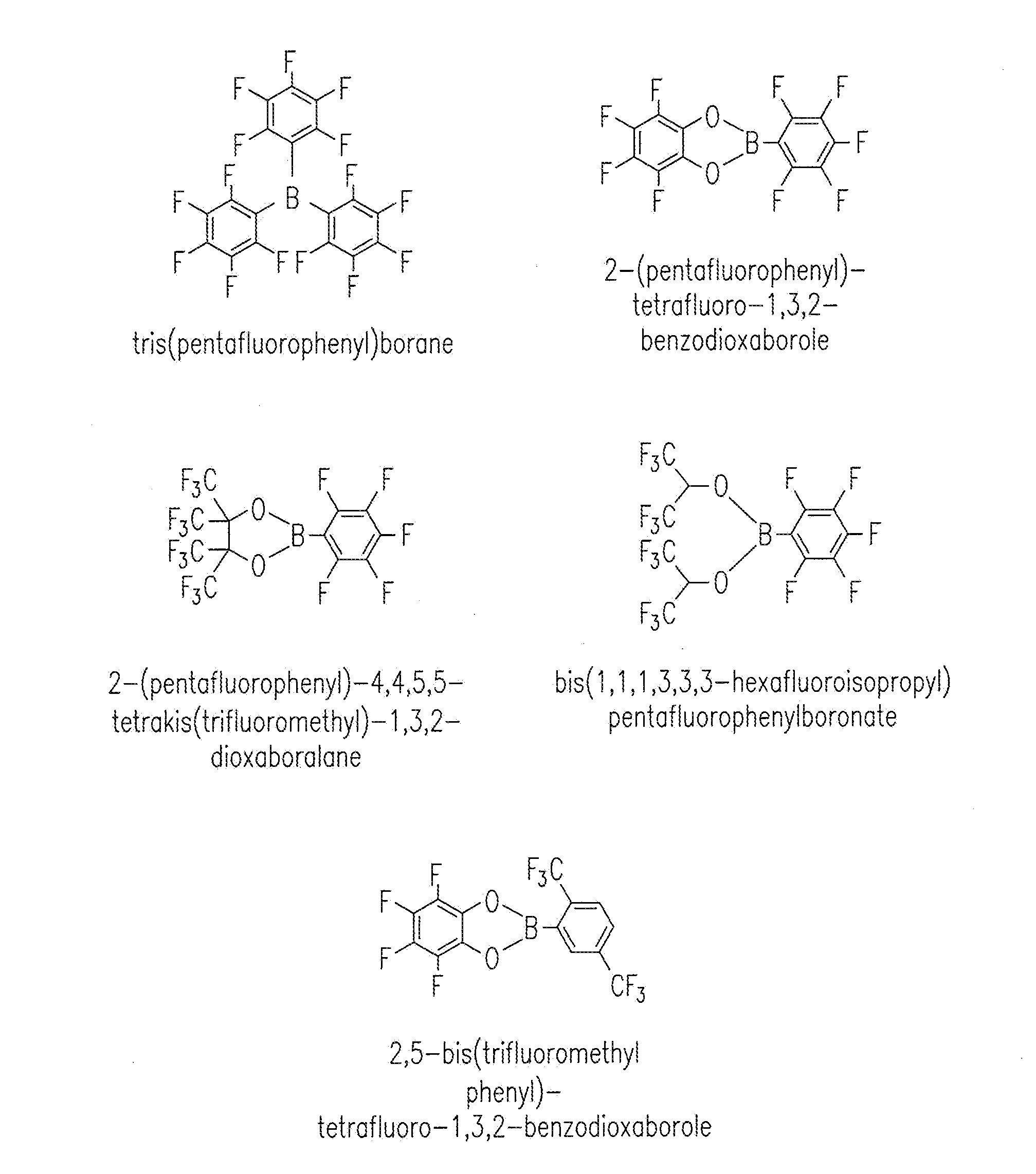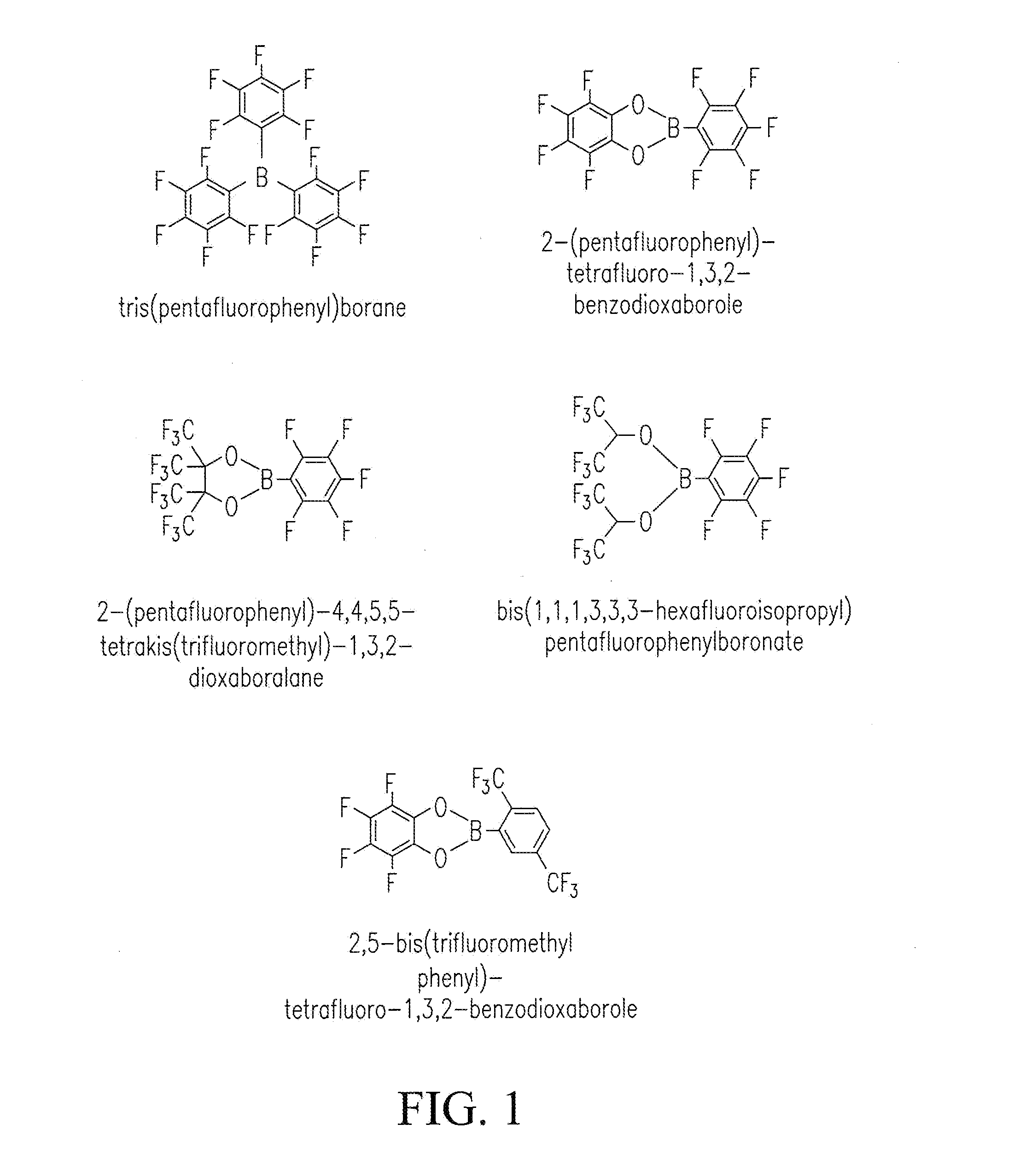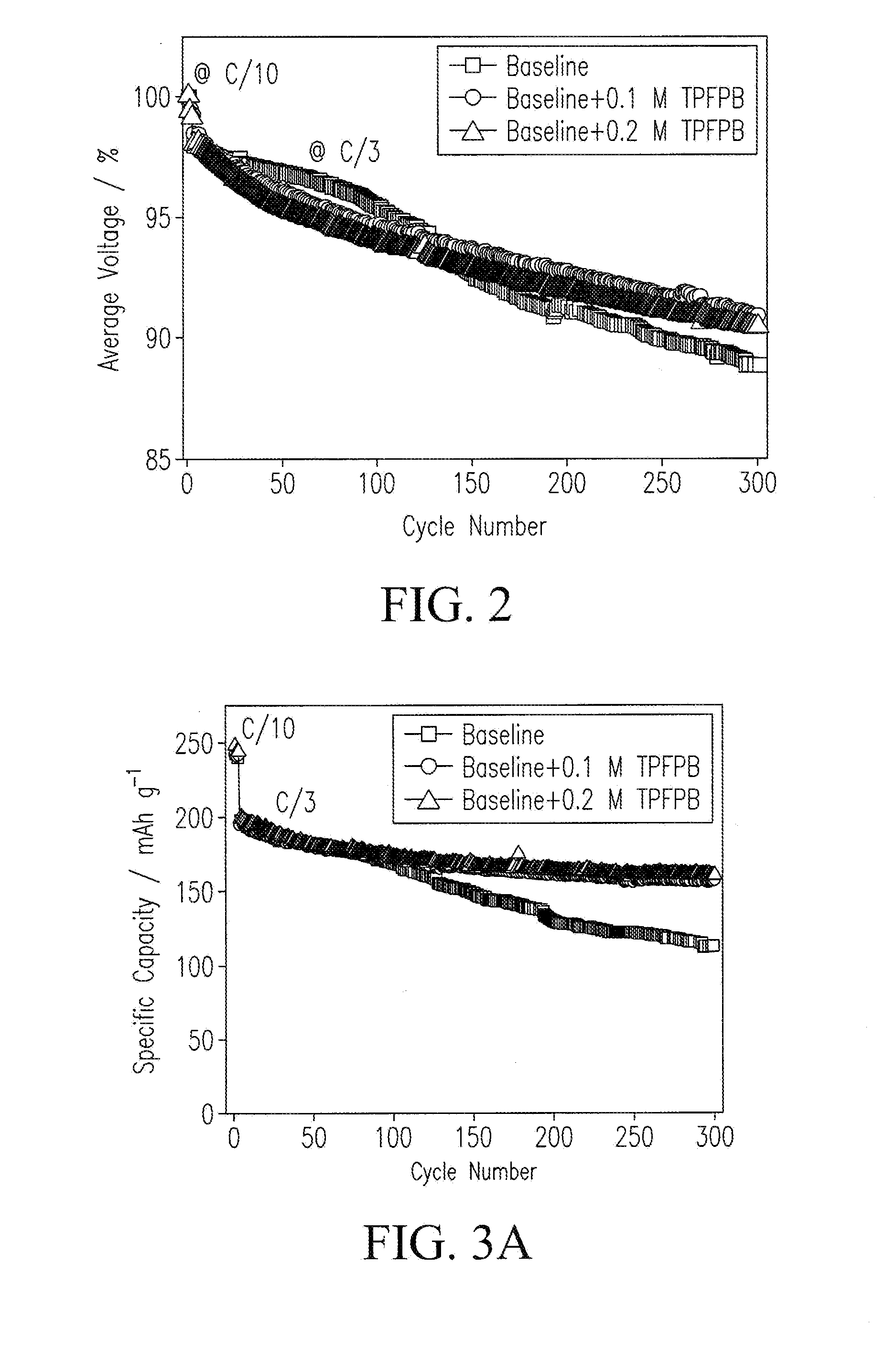Electrolyte additives for lithium ion battery and lithium ion battery containing same
a lithium ion battery and additive technology, applied in the field of electrolyte additives for lithium ion batteries and lithium ion batteries containing same, can solve the problems of low initial coulombic efficiency, voltage fading, and class of cathode materials, and achieve the effect of enhancing the number of stable charge-discharge cycles and enhancing the cycling stability of lithium-containing cathodes
- Summary
- Abstract
- Description
- Claims
- Application Information
AI Technical Summary
Benefits of technology
Problems solved by technology
Method used
Image
Examples
example 1
Electrode Preparation
[0052]Li[Li0.2Ni0.2Mn0.6]O2 was prepared by a co-precipitation approach. Nickel sulfate hexahydrate (NiSO4.6H2O), manganese sulfate monohydrate (MnSO4.H2O), and sodium hydroxide (NaOH) were used as starting materials to prepare a Ni0.25Mn0.75(OH)2 precursor. The precursor material was washed with deionized (DI) water to remove residual sodium and sulfate, then filtered and dried in a vacuum oven overnight at a temperature of 120° C. Ni0.25Mn0.75(OH)2 was well mixed with Li2CO3 and then calcined at 900° C. for 24 hours to obtain the cathode materials.
example 2
Preparation of Electrolytes
[0053]The baseline electrolyte was prepared by dissolving 1 M lithium hexafluorophosphate (LiPF6) in ethyl carbonate (EC) and dimethyl carbonate (DMC) (1:2 in volume). Electrolytes containing TPFPB (Sigma-Aldrich, St. Louis, Mo., USA) additive were prepared by dissolving 1 M LiPF6 and 0.1 / 0.2 mol TPFPB in EC / DMC solvents. Viscosity measurements were conducted on a Viscometer (e.g., a DV-II+ Pro Cone / Plate viscometer, Brookfield Engineering, Middleboro, Mass., USA). Conductivity measurements were made with a Multiparameter Meter (e.g., a 650 series multiparameter meter, Oakton Instruments, Pittsburgh, Pa., USA). Instruments were calibrated. Electrolytes were maintained at 25° C. in a constant temperature oil bath (Brookfield Circulating Bath Model TC-502).
example 3
Electrochemical Performance Measurements
[0054]Cathode electrodes were prepared by coating a slurry containing 80% Li[Li0.2Ni0.2Mn0.6]O2, 10% super P (from Timcal), and 10% poly(vinylidene fluoride) (PVDF) (e.g., Kynar HSV900, Arkema Inc., King of Prussia, Pa., USA) binder onto an Al foil current collector. After drying, the electrodes were punched into disks with ø=1.27 cm. A typical loading of the cathode electrode was 3 mg cm−2. Coin cells were assembled with as-prepared cathode electrodes, a lithium metallic foil as a counter electrode, a monolayer polyethylene (PE) membrane (e.g., K1640 PE membrane, Celgard LLC, Charlotte, N.C., USA) as a separator, and a carbonate-based electrolyte in an argon-filled glove box (e.g., MBraun Inc., Stratham, N.H., USA). Electrochemical performance tests were performed galvanostatically between 2.0 V and 4.7 V at C / 3 (1 C=250 mA g−1) after 3 formation cycles at C / 10 on a battery tester (e.g., a model BT-2000 battery tester, Arbin Instruments, Coll...
PUM
| Property | Measurement | Unit |
|---|---|---|
| cut-off voltages | aaaaa | aaaaa |
| charge rate | aaaaa | aaaaa |
| charge rate | aaaaa | aaaaa |
Abstract
Description
Claims
Application Information
 Login to View More
Login to View More - R&D
- Intellectual Property
- Life Sciences
- Materials
- Tech Scout
- Unparalleled Data Quality
- Higher Quality Content
- 60% Fewer Hallucinations
Browse by: Latest US Patents, China's latest patents, Technical Efficacy Thesaurus, Application Domain, Technology Topic, Popular Technical Reports.
© 2025 PatSnap. All rights reserved.Legal|Privacy policy|Modern Slavery Act Transparency Statement|Sitemap|About US| Contact US: help@patsnap.com



